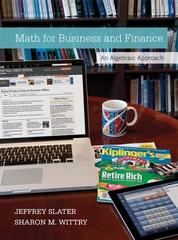


.EXPLAIN THE FOLLOWING ATTACHMENTS.
Question 3 Emma is a first-year Ph.D. student of economics. She is very lucky because she got a place to stay in the Aggie Village, the nicest part of Davis. She lives in a beautiful cottage with a little garden. Her modest wealth from being a TA is w. She spends it on coffee and gardening. Let z, denote the amount of coffee and ro the amount of gardening and let p, and p, denote the corresponding unit prices. Her budget constraint is given by Pili + patz w. (1) Coffee is really a private good in the sense that she is the sole beneficiary of caffeine in her coffee (unless she calls up in panic her fellow student in the middle of the night because she cannot solve her ECN200A homework problem). In contrast, gardening creates a positive externality on others. But so does the gardening of others create a positive externality on her. There is plenty of gardening in the Aggie Village. Denote by e the total externality or public good created from gardening in the community. Her utility function u(11, 12, e) is concave and continuously differentiable with a strictly positive gradient on the interior of its domain. The total externality depends in part on Emma's gardening r2 and on the externality created by the gardening of others, denoted by e-;. It is assumed to satisfy ese-ito12 (2) for some parameter a satisfying o > 0. Emma does not think that she can affect the level of externalities provided by others. For instance, Professor Schipper, who also lives in the Aggie Village, is so busy writing prelim exam questions that talking to him about keeping up his gardening is no use. Thus, we can safely assume that Emma takes e_; as well as p1. p2, and w as given. Since Emma diligently studies microeconomic theory for the prelims, she is eager to maximize her utility function subject to constraints (1) and (2). This yields demand functions I,(p1, paw, e_;) and 12(p1, P2, w, e_;) as well as her optimal desired amount of public good e(P1 , P2, w, e-;). a.) Write down her Kuhn-Tucker-Lagrangian (ignore non-negativity constraints). b.) Derive the Kuhn-Tucker first-order conditions (ignore non-negativity constraints). c.) Use the Kuhn-Tucker conditions and the assumptions that the solution is interior, that it is unique, and that constraints (1) and (2) are satisfied with equality to derive a system of three equations and three unknowns that does not involve multipliers and whose solution defines ri(p1, pz, w, e-;), 2(p1, p2, w, e_.) and e(p1, p2, w, e-;). (No need to solve it.) d.) If you think that Professor Schipper acts in a strange way sometimes, this is not just due to being an economic theorist. The secret is he comes from anotherProblem 4 The current yield curve for default-free zero-coupon bonds is as follows: Maturity (years) YTM 10% WN N 11% 12% a. What are the implied one-year forward rates for years 2 and 3? b. What would be the shape of the yield curve according to the Expectations hypothesis? c. If you believe in the liquidity preference theory, what would be your guess as to the upper limit on the short-term interest rate expected for the third year?QUESTION 1 Your entire wealth consists of the balance of your bank account, which is $ W, . You also own a painting which is worthless to you. You have a chance to sell the painting to a potential buyer. All you know about the buyer is that she has a reservation price (i.e. a maximum price she is willing to pay) re(L, M, H) with L












